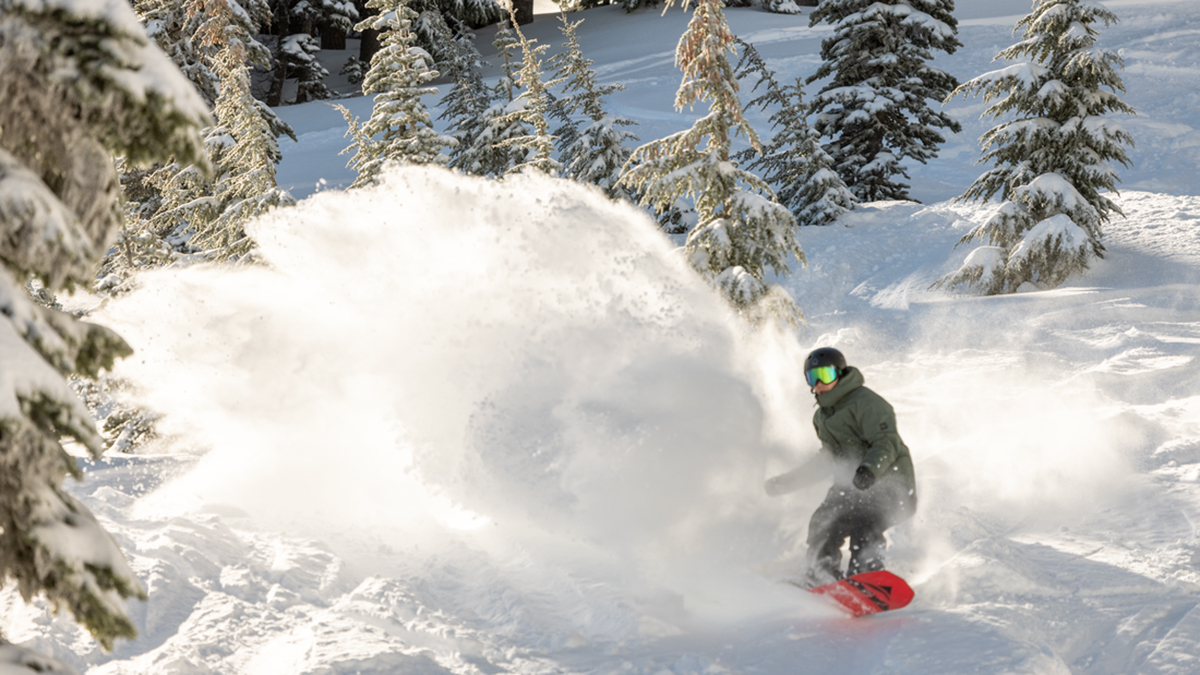Ever been blinded by glare off snow or couldn’t see ahead because of snow flurries? Then you know the importance of having the right pair of ski or snowboard goggles for the conditions. Goggle lenses come in a wide variety of tints that filter color and light in different ways to enhance your vision. Some tints work best on bright, bluebird days. Others sharpen contrast on overcast days when it’s harder to pick up shadows and contours.
Which lens color is ideal for you? Here are some key considerations when trying to decide.
Think About the Conditions You’ll Be Riding or Skiing
When choosing a goggle lens color, first consider the conditions you’re most likely to ski or ride. Are you blessed with sun-drenched slopes at your local mountain? Or are cloudy socked-in rides a norm? Do conditions change quickly over the course of a few hours so it makes more sense to get a goggle for all-purpose use? You’ll want to find a tint that is most suited for the light and weather conditions you’re skiing or riding. (Of course, you may need different lenses for different situations and we’ll talk more about your options below). Either way, you’ll want to start by using a goggle’s visible light transmission, or VLT, measurement as a guide.

What does VLT Mean for Goggles?
VLT is the amount of light that passes through your lenses and reaches your eyes. Visible light transmission – measured as a percentage – is affected by factors such as the color, thickness, coatings and material of the lenses. Manufacturers will often list a goggle’s VLT (or light transmission) with their products specs. On REI.com, you’ll often find the light transmission percentage under a product’s technical specs.
Colors and light transmission can vary a lot from brand to brand, so be sure to consult manufacturer’s specs. But here’s a rough guide:
| If you’re skiing or riding in … | … look for a VLT in this range … | … which are typically associated with these goggle lens colors … |
| Bright, sunny conditions | < 25 % | Platinum, black, red |
| Partly cloudy, partly sunny conditions | 25 %-50 % | Blue, green, red |
| Overcast, cloudy or low-light conditions | 50+ % | Yellow, gold/copper, amber, rose |
| Riding at night | 80 %-100 % | Clear |
- Dark or mirrored lenses like platinum, gray, black and red are suitable for days when the sun is blazing. They typically have a lower VLT (about 25 percent or less). Less light passes through the lens, blocking more glare.
- Softer colors like rose, yellow and gold increase contrast in overcast, low-light situations. They typically have a higher VLT (about 50 percent or more). More light passes through the lens.
- For all-purpose use, tints like red, blue and green cover a range of conditions, from partly cloudy to partly sunny.
- Clear lenses: Lenses with the highest VLT (up to 100%) block very little or no light. They’re ideal for night skiing when you want to let the most light through but still want to protect your eyes.
If you can’t find a goggle’s VLT, don’t worry. Manufacturers like Smith, Oakley, Giro and others make it easy by calling out the conditions that certain lenses are best suited for. Or, they provide a guide to their goggles based on bright, partially sunny or cloudy, or snowy conditions.
Which Goggle Color Is Best?

Once you’ve decided your riding conditions and the corresponding VLT for those conditions, then choosing the color is largely a matter of personal preference. Goggle manufacturers give you many color options to express your individual style through your goggles while enhancing visibility for the specific conditions you want to ski. Technology is allowing more lens colors to be used for bright light conditions, for example, so you’re not limited to just grays and blacks if you want to make a color statement. (A goggle with a low VLT may be layered with a blue mirror to give you a pop of color). Brands offer a wide array of colors for all weather conditions, so you’re likely to find a goggle in the shade you want for the riding conditions you need.
Multiple or Interchangeable Lenses
If you’re only buying one pair of goggles, look for one that covers you for a majority of your riding. For those who ski in different light conditions, it may make sense to get a second pair of goggles or one pair that has interchangeable lenses you can switch out depending on the conditions. Many brands make it quick and easy to change your goggle lens (even mid-run or while on the lift); the goggles use magnets, snaps or rails to swap out the lenses. Premium goggles that have interchangeable lenses also often come with a free “bonus” lens so you’ll typically have a dark lens for bright light conditions and another for low light conditions. (For example, the Smith 4D MAG ChromaPop Snow Goggles, which won an REI Co-op Editors’ Choice Award, offers two lenses with bright-light and low-light tints; consult the technical specifications for color and light transmission percentages).
If you can’t be bothered to switch your lenses but you ski or ride in varying conditions, consider photochromic goggles for ever-changing conditions. Like sunglasses, the technology on these snow goggles automatically darkens in bright light or gets lighter when there isn’t much light out. They’re convenient if you want just one pair of goggles but there is an upcharge for this feature.
Need a goggle recommendation? Consult our guide, The Best Snow Goggles, for some ideas.
To learn more about goggles, read How to Choose Ski and Snowboard Goggles.
Editors’ note: We update this article with new links and information since it published on Oct. 18, 2019.
